Let’s go on a journey through Bali’s wildlife and animal kingdom. We’ll explore the habitats, behaviors, and cultural significance of the island’s most iconic creatures. Let’s go into the heart of Bali’s wildlife wonders. You can see these animals on the island either roaming free or they are in a zoo.
Bali’s Sacred Monkeys: More Than Just Mischief
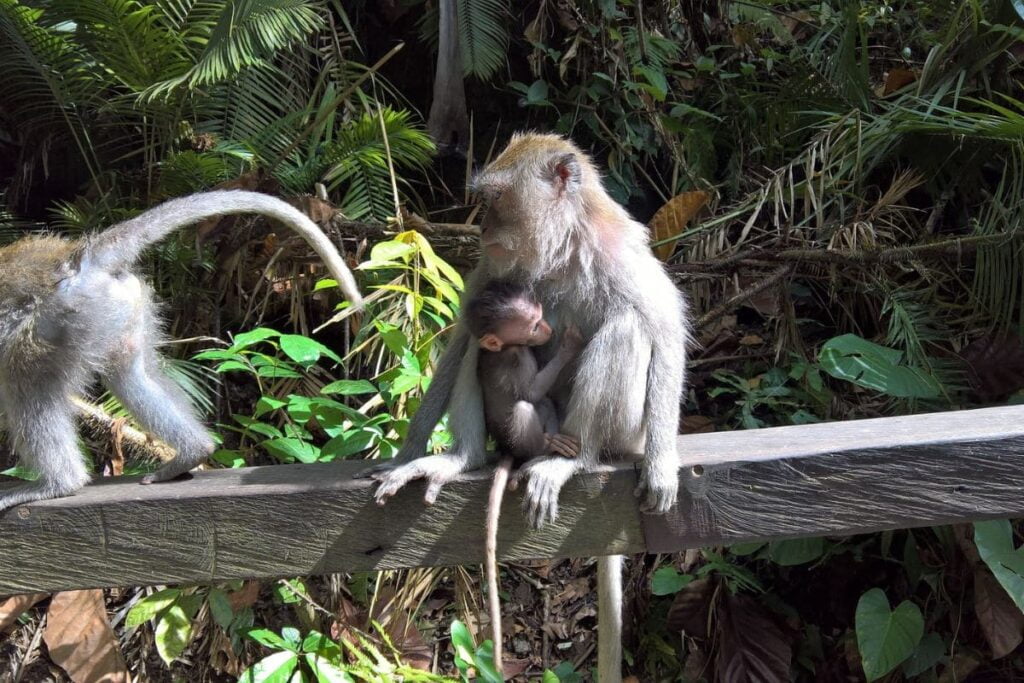
When you stroll through Bali’s lush forests, especially near temples, you’re bound to encounter its playful residents: the grey-haired macaques. Ubud’s Monkey Forest is perhaps the most famous spot to see these creatures up close. But remember, these aren’t just any monkeys; they’re deeply woven into Bali’s cultural fabric.
These macaques are more than just tourist attractions. They’re guardians of sacred temples and are revered by locals. While their antics might seem mischievous, there’s a deeper connection between these animals and the island’s spirituality. The dense green jungles they call home are also dotted with ancient temples, making it a blend of nature and culture.
However, a word of caution: always admire them from a distance. They might look cute, but can be fierce and look threatening. Let them eat by themselves, do not feed them (even if you see some tourists doing it).
So, next time you spot a macaque in Bali, remember you’re witnessing a part of the island’s soul. Respect their space, and they’ll continue to be the spirited guardians of Bali’s sacred sites.
TIP: watch out for these at Monkey forest, Uluwatu temple and Mount Batur hike. there are more places where you can encounter them. They’re cheeky, take glasses, shiny objects, phones as well! be careful with your belongings when you see them.
The Mystical Birds of Bali: A Symphony in the Skies
Bali isn’t just about monkeys and temples. As the sun begins to set, the skies of Petulu village come alive with the mesmerizing dance of Kokokan birds, also known as herons. Every evening, these birds fly over the village, turning the sky into a canvas of fluttering wings.
Locals believe these birds are guardians, protectors of the village’s spirit. Their timely arrival each evening isn’t just a natural phenomenon but a spiritual one. Some even say these birds are reincarnations of souls from the past, returning to watch over the land.
While in Bali, make it a point to visit Petulu around dusk. Witnessing hundreds of herons settling into the trees, their silhouettes against the twilight, is a sight to behold. It’s a gentle reminder of how nature and folklore intertwine in Bali, creating stories that resonate through time.
And as you stand there, amidst the soft calls of the Kokokan birds, you’ll feel a deep connection, not just with nature, but with the very soul of Bali.
Slithering Wonders: Bali’s Reptilian Residents
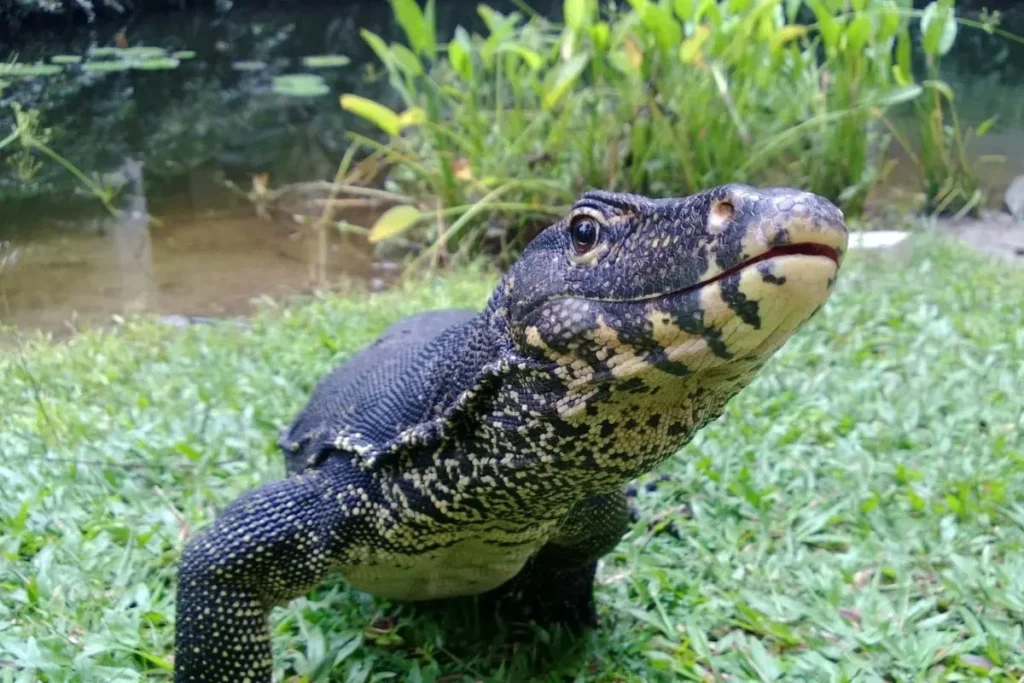
For those with a fascination for creatures that crawl and slither, Bali offers a unique experience at the Bali Reptile Park. Situated close to the Bali Bird Park, this sanctuary is a haven for reptiles and amphibians, showcasing the island’s diverse herpetofauna.
Within the park’s borders, the iconic Komodo dragon stands as a testament to Indonesia’s diverse wildlife. Alongside it, bright flying lizards and curious geckos offer a visual treat. However, the park also houses a darker side, with some of the planet’s most venomous snakes like the menacing cobra and the elusive mamba. For the observant guest, plenty of uniquely patterned frogs also awaits, captivating with their vibrant hues.
Safety is important, and the park ensures that visitors can watch these creatures in a secure environment. Informative signs and guided tours offer insights into the habits and habitats of these reptiles, making it an educational experience for both kids and adults.
So, if you’re seeking to add an extra bit of adventure to your Bali trip, Rimba Reptile Park awaits. Come face to face with some of nature’s most amazing creatures and leave with memories that will last a lifetime.
Roaring Adventures: Bali’s Exotic Mammals
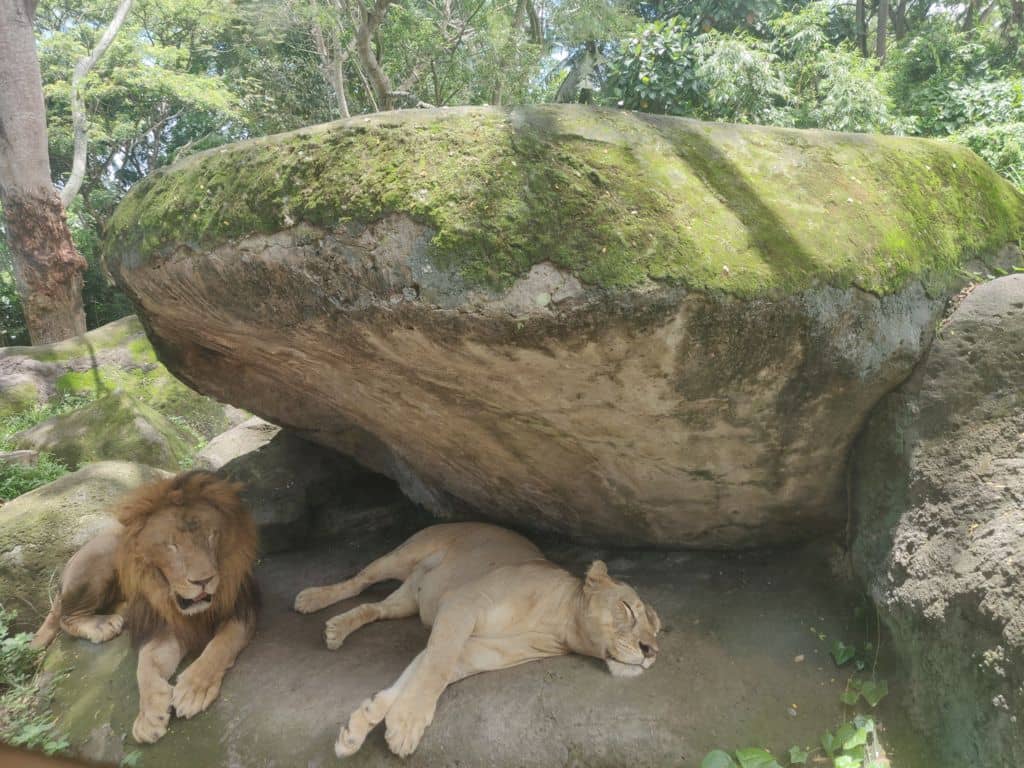
Bali isn’t just about beaches and temples; it’s a haven for wildlife enthusiasts. One of the island’s crowning jewels is the Bali Safari and Marine Park. Unlike your typical zoo, this park offers a more immersive experience, bringing you closer to nature’s wonders.
60 species from around the world find the home in the park. From the majestic lions and tigers, who rule the land with their might, to the playful meerkats and porcupines, every corner of the park has a story to tell. And let’s not forget the Bali Mynah, a bird native to the island, singing its melodious tunes.
I’ve got an extensive review on Bali Safari and marine Park. You would be able to read here if you can
Turtle Tales: Bali’s Marine Protectors
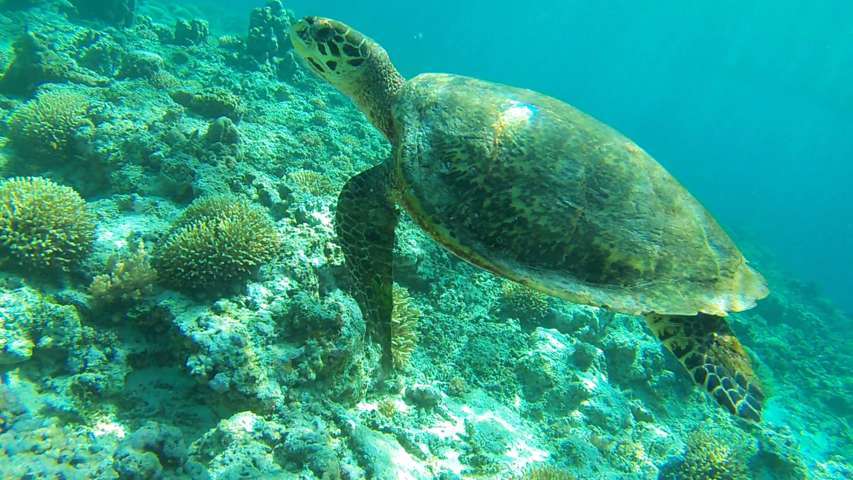
Turtles have a special place in Bali’s heart and history. These graceful marine creatures, once hunted for their meat and shells, are now the focus of significant conservation efforts on the island. The Turtle Conservation and Education Centre (TCEC) stands as a beacon of hope in this mission.
Bali is home to four different species of sea turtles:
- Hawksbill Turtle: Named for their narrow, pointed beak, they are found mainly throughout the world’s tropical oceans, predominantly in coral reefs. They feed mainly on sponges and play an important role in maintaining the health of coral reefs.
- Green Sea Turtle: One of the largest sea turtles and the only herbivore among the different species. They are found mainly in tropical and subtropical waters¹.
- Loggerhead Turtle: Named for their large heads that support powerful jaw muscles, allowing them to crush hard-shelled prey like clams and sea urchins¹.
- Olive Ridley Turtle: Named for the color of its shell—an olive green hue. They are currently the most abundant of all sea turtles.
Turtles play a crucial role in the ecosystem. Here are a few reasons why they are important:
- Maintaining sea grass habitats: Seagrass beds are important feeding grounds for many marine species. Turtles, especially Green Sea Turtles, graze on the sea grass, maintaining its health and encouraging its growth.
- Enriching nesting beaches: When female turtles lay their eggs on the beach, essential nutrients are introduced to the beach ecosystems.
- Providing habitat: Many creatures, known as epibionts, live on the shells of turtles. By moving around, turtles help these creatures to disperse across the ocean.
- Controlling jellyfish populations: Turtles, especially the Leatherback Sea Turtle, feed on jellyfish and help to control their populations.
These are just a few examples of how turtles contribute to the ecosystem. Their role is vital for maintaining the balance of marine life.
Dolphins at Lovina
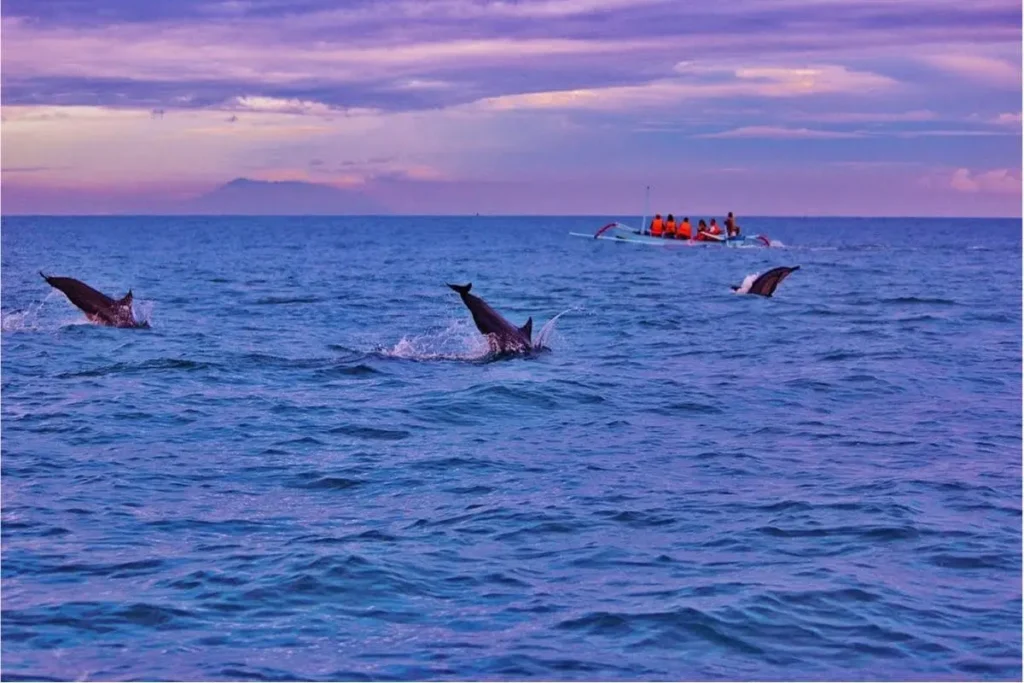
Lovina in North Bali is famous for its beautiful beaches and calm waters. But the real stars here are the dolphins. Every morning, as the sun rises, you can see these friendly creatures jumping and playing in the water. People come from all over to watch this amazing sight.
If you want a closer look, there are boat trips. Local guides will take you out on the water to see the dolphins up close. It’s truly special to watch them play in the early morning light. But remember, it’s important to treat these animals with care. It’s best to choose boat tours that are kind to the dolphins and don’t chase them. This way, we can enjoy their beauty without causing them any harm. In Lovina, the dolphins remind us to enjoy nature responsibly.
Luwak (Civet Cat) the coffee maker
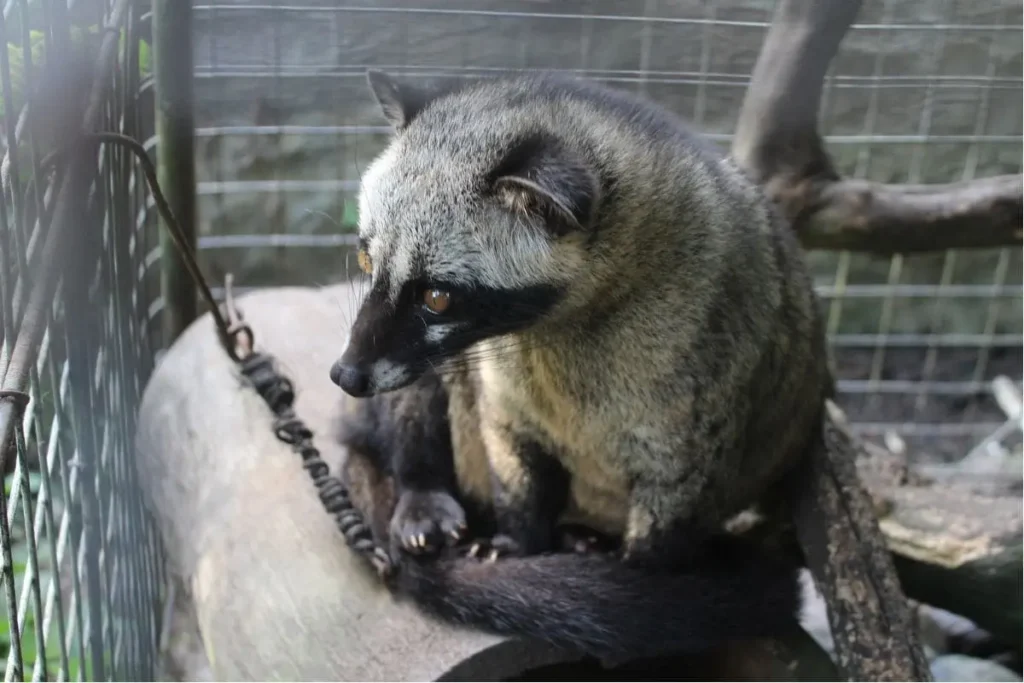
The Luwak, or civet cat, is a special animal found in Bali and parts of Southeast Asia. It’s famous for helping make a unique coffee called Kopi Luwak. Here’s how it works: the Luwak eats coffee cherries. Inside its body, the beans get a special treatment. After the Luwak leaves them behind, people collect and roast these beans. This makes a coffee that’s smooth and has a special taste.
The Luwak is a night-loving animal, and you might seenot see it active during the day. If you want to try this coffee.. wait I am stopping here. It does belong to Bali’s wildlife, but I want to say that currently there is no ethically or cruelty-free certification when it comes to drinking coffee made with beans processed by this creature. (source: exotic treat or animal cruelty)
Insects of Bali: Tiny Wonders in a Tropical Paradise
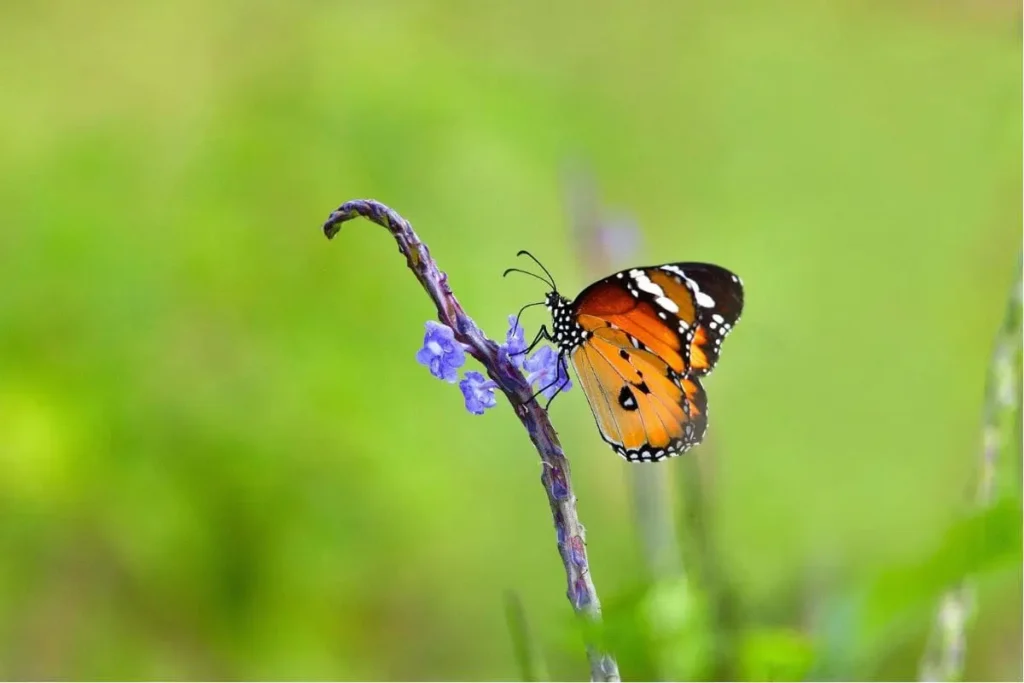
Bali, known for its stunning landscapes and rich culture, is also home to a myriad of tiny wonders: its insects. The Bali Butterfly Park, or Taman Kupa Kupa, stands as a testament to this. As the largest butterfly park in Asia, it offers visitors a chance to witness hundreds of butterflies from the 15 species that thrive in Indonesia. From the vibrant Bali peacock to the elusive paradise birdwing, the park is a kaleidoscope of colors and patterns.
The park has more than just butterflies. You can also see many different bugs and spiders. There are shiny beetles and insects that look like sticks or leaves. Even though some, like spiders and scorpions, might seem scary, they are important for Bali’s nature. It’s a place full of surprises for everyone.
Visiting the park is more than just an excursion; it’s an education. It reminds us of the intricate balance of nature and the importance of every creature, no matter how small. So, the next time you’re in Bali, take a moment to appreciate these tiny wonders.
Bali’s Wildlife Wonders Await
I didn’t mention our 4-legged friends, the dogs of bali and cats, cows etc, but I do now. This article was more about the wildlife and exotic animals at the safari.
Bali offers a diverse wildlife. From playful monkeys to majestic birds, every creature adds a unique touch to the island’s charm. But as we immerse ourselves in these natural wonders, it’s crucial to remember our responsibility.
Ethical tourism isn’t just a buzzword; it’s a commitment. It’s about making choices that respect and protect the animals and their habitats. Whether it’s choosing not to ride elephants or ensuring we don’t disturb nesting turtles, every small action counts.
So, as you plan your next Bali adventure, prioritize experiences that celebrate and conserve its natural wonders. Let’s travel with purpose, ensuring that Bali remains a wildlife paradise for generations to come. Dive deep, explore responsibly, and let Bali’s wildlife wonders enrich your soul.
Hi I am Dwi. I am a blogger, travel agent and a mom of a lovely daughter and wife to a supportive husband. I customize and plan tours in Bali and islands nearby for a living and have been doing this for more than 14 years. Get in touch via contact [at] taletravels.com
